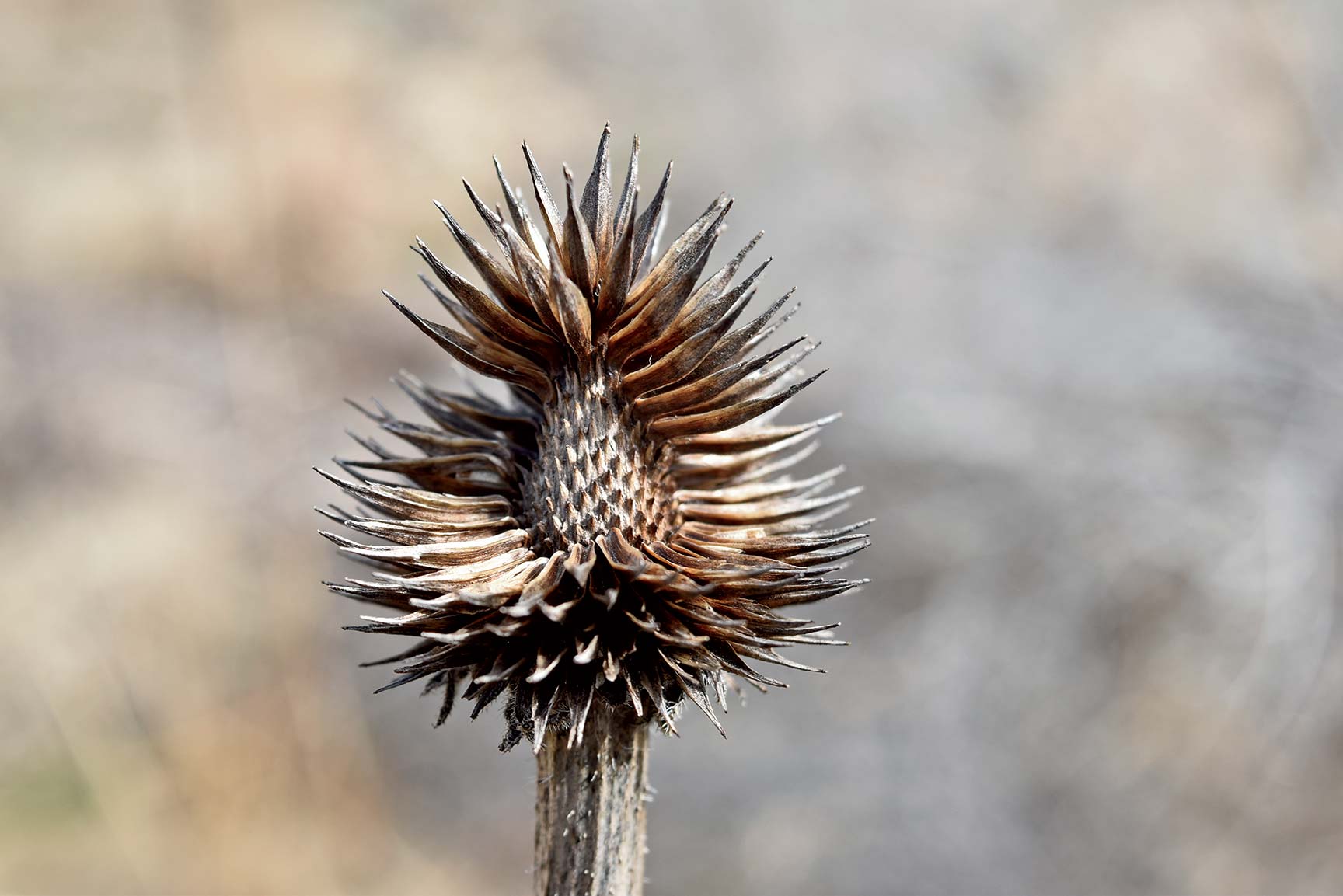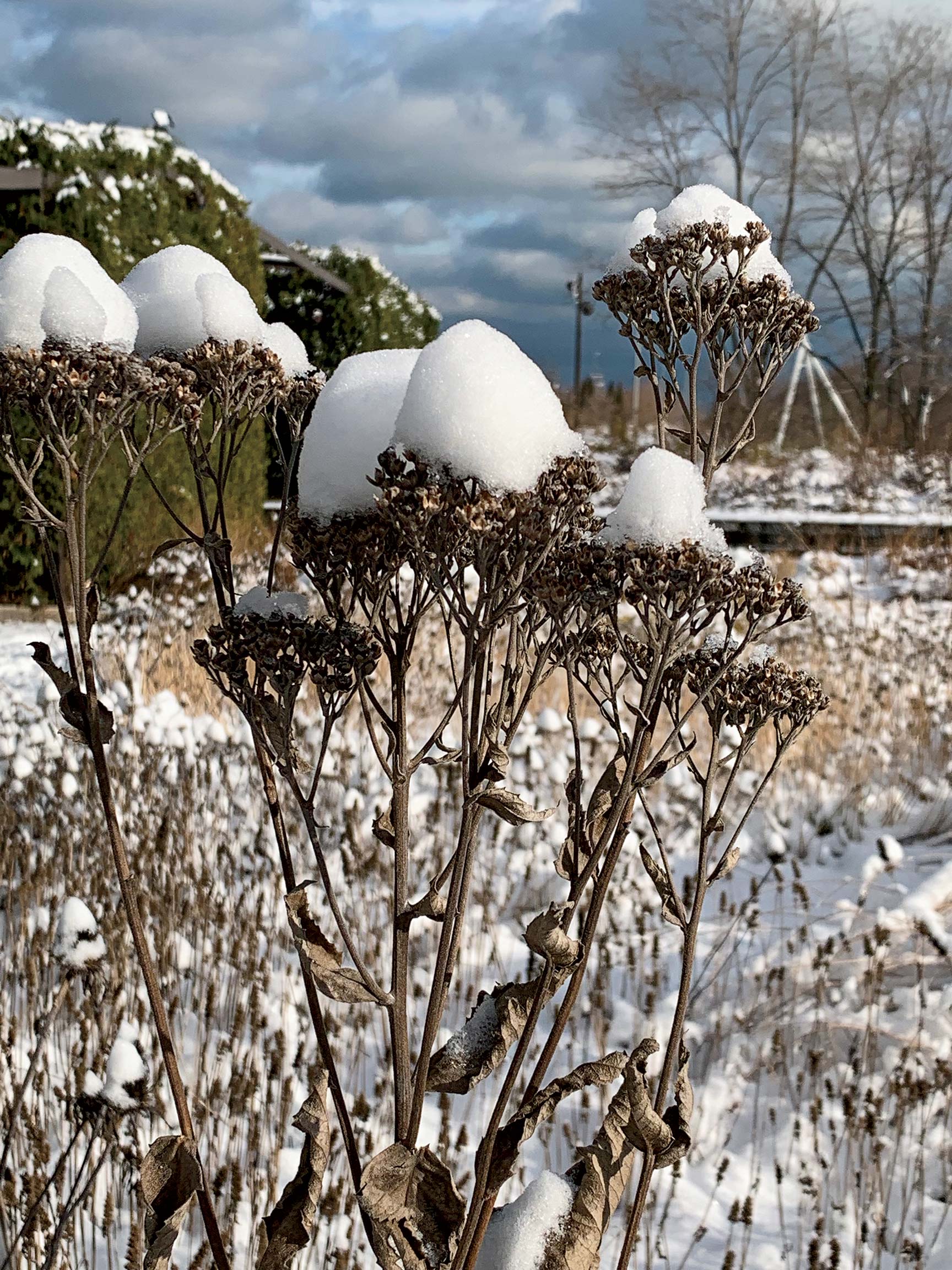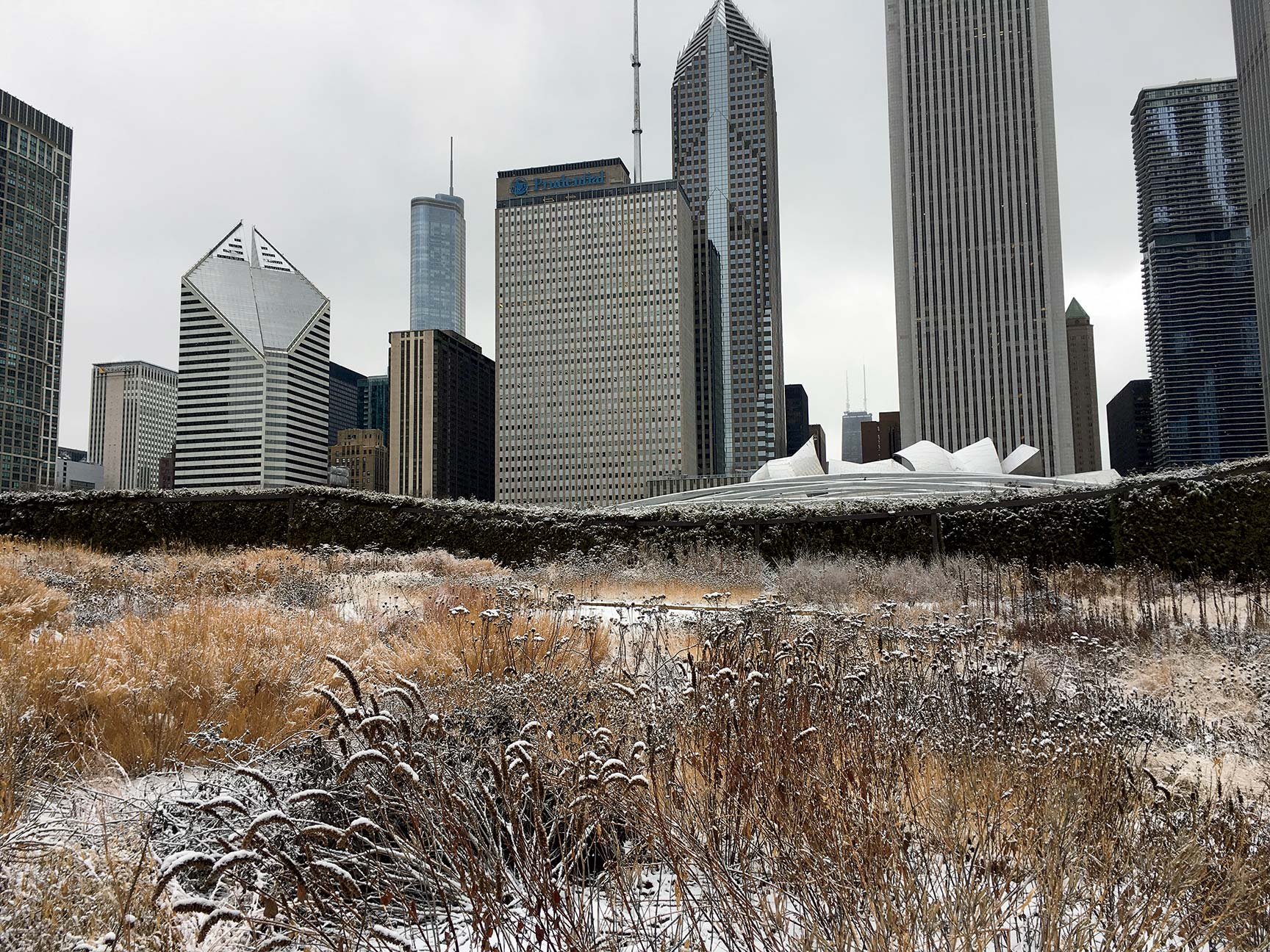Beds full of desiccated plants suddenly become striking when you realize, as the Dutch garden designer Piet Oudolf has said, “Brown is also a color.” He famously creates his compositions, including Lurie Garden, with all four seasons in mind. “He thinks ahead to what plants will look like in the future when he selects them,” says the garden’s director, Laura Ekasetya, who now shepherds Oudolf’s vision. That means she allows the flora to swish and sway until March, when she finally cuts back the previous year’s growth to make way for spring. Here, she walks us through five things to look (and listen) for.
Landscape Art
Before you enter, observe the grounds from across Monroe Street. “The garden is meant to be a tapestry of different textures,” Ekasetya says. “It’s meant to be this painting in plants when viewed from the Art Institute.”

Rustle and Flow
Because snow absorbs ambient noise, you can better hear the sounds the plants make in the wind. A highlight: the slender,papery blades of Dallas Blues, a type of switchgrass, which can reach a height of five feet.

Put a Bird on It
Goldfinches flock to the dark, spiky seedheads of echinacea plants (also known as coneflowers). In winter, the birds turn a dusty brown, with just the slightest buttery tinge to their face and neck. Tell your kids to look for seedheads the finches have plucked into tiny Mohawks.

Snow Bouquet
The small sprays of flowers atop the thin stems of wild quinine dry into a sturdy, flat platform that holds up to even heavy, wet snow. “It looks delicate, but if you touch it, it’s really tough,” Ekasetya says. “It’s a good landing pad for sparrows, and then they eat the seeds.”
Spring Awakening
Several insect species overwinter in the garden, including two varieties of butterflies that hunker down in the arborvitae. They typically emerge in March — but sometimes, if it’s mild, you can spot them in February drinking sap from the trunks of maple trees that border the western edge.




Comments are closed.